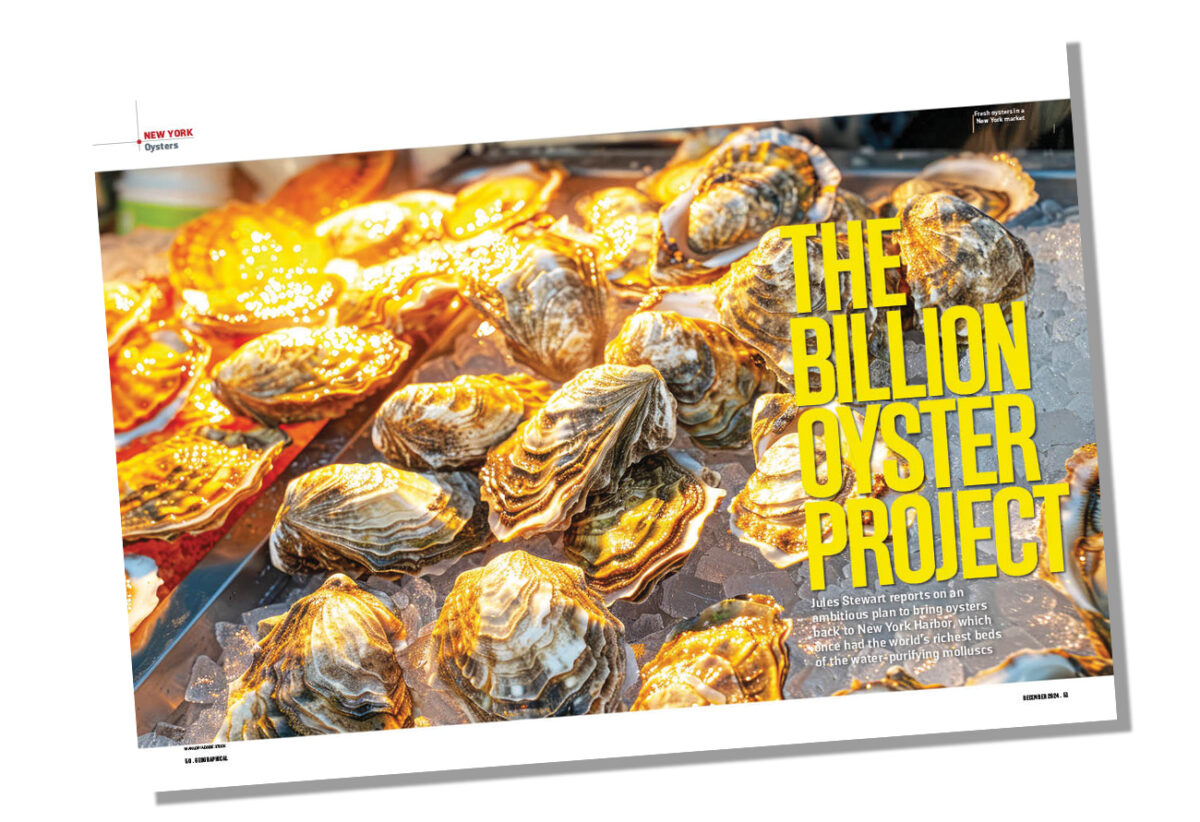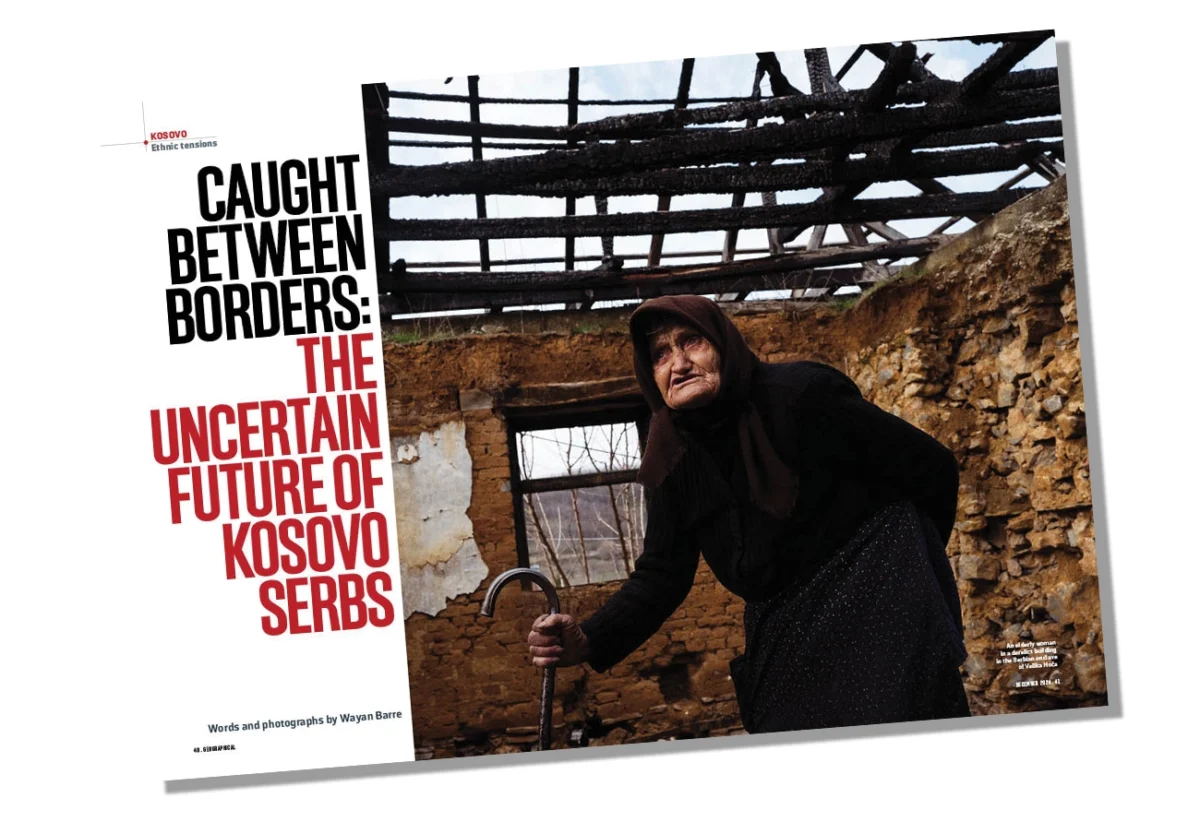
From cleaning New York Harbor with a billion oysters to Brazil’s political crossroads, discover what’s in the latest issue of Geographical
In our December issue, take an in-depth look at Lula’s difficult political choices for Brazil, discover how New York Harbor is being cleaned up by a billion oysters, and go hunting with the Hadzabe in Tanzania. We also journey through Kosovo to experience the lingering bitter ethnic tensions a generation after a brutal war. On a lighter note, we find out which countries spend most on Christmas.
Our cover story is a stunning gallery of French photographer Réhahn’s most iconic portraits, which celebrate the extraordinary beauty of the human experience.
And our top columnists help you understand a complex and fast-changing world. Award-winning journalist and author Tim Marshall writes about North Korea and the troubling drift to a bipolar world. Climate commentator Marco Magrini looks at the challenges of ushering in the new age of electricity. Campaigns director of Equal Right, Patrick Brown, outlines a radical plan to eradicate world poverty with a global universal basic income.
We have an exclusive interview with Oscar-winning director Chai Vasarhelyi about filming the finding of Shackelton’s ship Endurance in the Antarctic. While Rory Walsh takes you on a walking tour of London’s lost East End, plus Tristan Kennedy extols the delights of riding your bike on winter nights and gives his tips on what gear you will need.
Our digital edition is out now, and you can not only read all the great stories in that issue, but our app also gives you access to our full archive dating back to 1935 with hundreds of magazines to explore. And if you want to enjoy our beautifully designed and produced print magazine, we can post the next edition to you anywhere in the world. Join us and stay on top of the world!

Brazil’s political pendulum

Brazil finds itself at a pivotal juncture, where the echoes of its past confront the ambitions of its future. In a dramatic return to power, Luiz Inácio Lula da Silva, universally known as Lula, steps into the presidential palace amid a maelstrom of economic turbulence and political discord. His predecessor, Jair Bolsonaro, left behind a staunchly conservative Congress and a legacy that prioritised agricultural expansion over environmental stewardship.
Now, Lula must navigate a labyrinth of challenges as he endeavours to revive Brazil’s celebrated social welfare programs, curb the devastation of the Amazon rainforest, and reclaim the nation’s standing as a global diplomatic force.
As one of the world’s largest democracies and a leader in global biodiversity, Brazil’s choices will resonate far beyond its borders. From the slums of Rio to the corridors of the United Nations, Lula’s presidency is more than a political chapter – it’s a defining moment in the story of a nation at a crossroads.
The stakes could not be higher. Brazil’s economy, once a beacon for emerging markets, grapples with inflation and international trade pressures. At the same time, its social fabric bears the scars of years of polarisation, a stark divide evident in its politics and public discourse. Can Lula balance these complex priorities, or will the weight of his ambitious promises prove too great to bear?
New York’s oyster comeback

The oysters of New York Harbor are staging an extraordinary revival, rewriting a story that was almost lost to history. Once heralded as the ‘lungs’ of the harbour, these molluscs played a vital role in filtering water and sustaining marine biodiversity. But over centuries, overfishing, pollution, and urban expansion pushed them to near extinction. Today, thanks to the innovative Billion Oyster Project, they are making a dramatic return.
At the heart of this effort lies a unique collaboration between scientists, environmentalists, and the city’s culinary community. Local restaurants are donating their discarded oyster shells, which are then repurposed as the foundation for new reef structures.
From schoolchildren learning about environmental stewardship to urban planners incorporating ecological resilience, the Billion Oyster Project embodies a broader movement to heal the scars of industrialisation. The harbour is becoming not just a body of water but a living symbol of sustainability, resilience, and community-driven change.
Kosovo’s divided future: can peace endure?

Sixteen years after declaring independence, Kosovo remains a nation caught in limbo, its path to peace obstructed by deep-rooted divisions. At the heart of this tension are thousands of Serbs living in enclaves across the country, steadfast in preserving their culture and identity despite the pressures of assimilation and political exclusion. Supported by Serbia and facing marginalisation from Kosovo’s government, many of these communities feel caught between two worlds.
The situation is far from static. Political rhetoric and sporadic violence keep the wounds of the past painfully fresh. For many Serbs in Kosovo, everyday life is defined by uncertainty: navigating limited economic opportunities, strained inter-ethnic relations, and a sense of being pawns in a larger geopolitical struggle. Meanwhile, Kosovo itself seeks greater international recognition, grappling with the demands of nation-building and reconciliation.
As international actors mediate delicate negotiations, the question looms large: can a path to genuine coexistence be found? Or will entrenched divides deepen, pulling the region back into conflict?
Hunting with the Hadzabe

Hidden in the rugged terrain of Tanzania’s Lake Eyasi region, the Hadzabe people offer a rare glimpse into a way of life that has endured for more than 10,000 years. As one of the last true hunter-gatherer societies, their existence is a testament to human resilience and adaptability. But this lifestyle, rooted in harmony with nature, faces increasing threats from modernity.
In this immersive account, Anthony Ham joins a group of Hadzabe hunters as they track game through dense bushland, using skills honed over millennia. With their bows and poison-tipped arrows, they move through the wilderness with a confidence that speaks to an intimate knowledge of their environment.
Yet, this extraordinary existence is under siege. Encroaching agriculture, tourism, and government policies threaten the Hadzabe’s traditional territories. As the world looks to preserve its cultural heritage, the Hadzabe’s story is a vivid reminder of what is at stake.
Who spends the most on Christmas?

Christmas is celebrated across the globe, but the ways in which it’s observed – and the amount of money spent – vary dramatically. From Japan’s unexpected KFC feasts to the booming market for holiday romance in China, the festive season reveals fascinating cultural quirks and economic trends.
Beyond cultural traditions, the global Christmas economy is a powerhouse. Retail giants see their profits soar, while travel and hospitality sectors cater to millions seeking festive getaways. But alongside this cheer lies the growing critique of consumerism, with calls for more sustainable and meaningful celebrations. As the festive season evolves, it continues to reflect the shifting values and priorities of societies worldwide.
Iconic portraits from far and wide

Step into the world of Réhahn, a photographer whose portraits transcend borders, capturing the essence of humanity with striking clarity. Known for his work with diverse communities across continents, Réhahn’s images invite viewers into a deeply personal dialogue with his subjects.
Through his art, Réhahn challenges us to see the shared humanity that connects us all. His work is not just a collection of images but a call to embrace the richness of our world, one portrait at a time.




